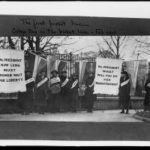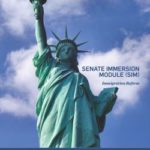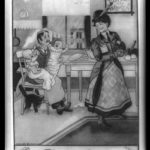Today, the American people vote for president and vice president on Election Day. But, technically speaking, these votes don’t directly determine the outcome of the election. These popular votes determine which electors will be appointed to the Electoral College, which is made up of 538 electors drawn from the states and the District of Columbia. Each state is granted a different number of electoral votes based on the size of its congressional delegation. The electors meet after the general election to cast their votes for president and vice president.
Contested Ballots: You Be the Judge
This lesson uses the example of the 2008 contested Senate election between Al Franken and Norm Coleman in Minnesota to discuss contested elections, counting votes, and recount laws. Looks at recount laws in your own state.
Suffragists and Their Tactics
Suffrage Strategies: Voices for Votes

Students examine a variety of primary source documents related to the women’s suffrage movement. They identify different methods people used to influence and change attitudes and beliefs about suffrage for women. Students then create original documents encouraging citizens to vote in current elections.
How the Law Regulates Who Votes

In this lesson, students will discuss what qualifications are necessary to vote. The activity presents a series of potential voters for a student council election, and asks that students either allow or prohibit each person from voting. After reflecting on their justifications, they will learn that states and the federal government have very few restrictions on voting. The instructor might then lead a discussion on the importance of voting to the democratic process
Choice Board – Conversations with Suffragists
On August 18, 1920, women won the right to vote with the ratification of the 19th Amendment. In this lesson, students will hear suffragists Susan B. Anthony, Sojourner Truth and Alice Paul, as portrayed by interpreters from the American Historical Theatre, talk about their experiences as activists.
Win the White House (Game and Teacher Guide)
In Win the White House, your students take on the role of presidential candidate from the primary season all the way through to the general election. The player strategically manages time and resources to gain control of as many electoral votes as possible over a ten-week campaign. This can only be done by effectively communicating his or her position on issues, and mastering media and public appearances.
Immigration Reform (SIM Lesson Plans)

The purpose of this learning module is to help students learn how a U.S. Senator might address an issue of public significance under consideration in the United States Congress. Learning about personal, state, party, and national interests will help students understand representation more fully. The pre-visit examines how elected representation works. The post-visit lesson supports critical analysis of each student’s strategic choices and votes, preparing them to defend their efforts.
Staging Spectacles to Win Votes
Running for president is a lot like putting on a show. As candidates tour across the country, they stage carefully choreographed events in hopes of impressing voters.
